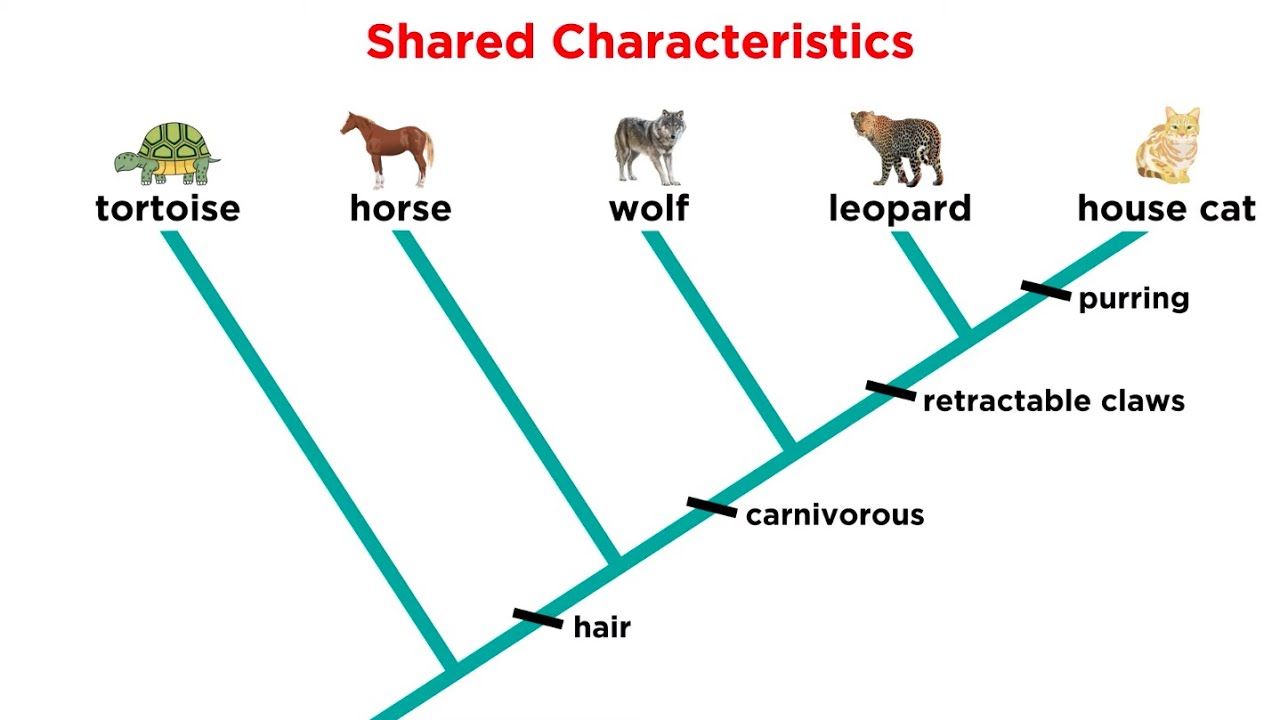Cladogram
A cladogram is a diagram that shows the evolutionary relationships between species. It is constructed based on shared characteristics, such as similarities and differences in DNA base sequences or amino acid sequences of proteins.
Cladograms Represent Evolutionary Relationships
- Cladograms are branching diagrams showing evolutionary relationships between species.
- They're built using DNA sequences or protein amino acid sequences, which objectively reveal shared ancestry.
- More similar sequences mean species diverged more recently.
- Greater sequence differences mean species diverged longer ago.

Why Use Base and Amino Acid Sequences?
- DNA and proteins accumulate changes over time as a result of mutations.
- These changes occur at a roughly measurable rate, allowing scientists to infer how long ago two species diverged.
Base Sequence Comparisons
- DNA base sequences provide the most direct genetic evidence.
- Mutations alter the order of bases (A, T, C, G) over evolutionary time.
- Sequence alignment software compares stretches of DNA from two or more species, identifying similarities and differences.
- Closely related species show long stretches of identical sequences.
Amino Acid Sequence Comparisons
- Mutations in DNA can lead to changes in amino acids in proteins.Comparing amino acid sequences allows us to estimate evolutionary distance between species.
- Conserved proteins like cytochrome c (respiration) or haemoglobin (oxygen transport) are commonly used because they evolve slowly.
- Slow evolution makes these proteins ideal for studying distant evolutionary relationships across large groups (e.g., mammals, birds, reptiles).
Parsimony and Cladogram Construction
Parsimony
Parsimony favors the simplest explanation, requiring the fewest evolutionary changes.
- Computers analyse sequence data using the principle of parsimony, which selects the cladogram requiring the fewest evolutionary changes.
- This assumes the simplest explanation is most likely.
- Multiple cladograms can be generated from the same data, but the most parsimonious one is chosen as most probable.
It's more likely that fur evolved once in mammals than multiple times independently, so all mammals are grouped in a single clade.
Simple Example 1: DNA Base Sequences
- Consider three species, A, B, and C, with the following DNA sequences for a specific gene:
- Species A: ATGCTACG
- Species B: ATGCTGCG



